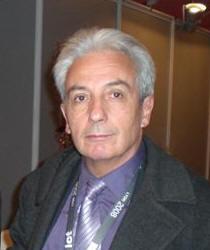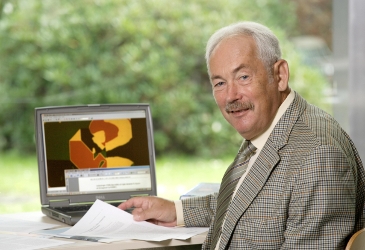Three distinguished FET scientists receive Nobel Prize awards
Nobel Prize in Physics 2007 awarded to Albert Fert and Peter Grünberg
Albert Fert (Centre National de Recherche Scientifique, Université Paris-Sud, Orsay, France - picture left) and Peter Grünberg (Forschungszentrum Jülich, Germany - picture right) were awarded the 2007 Nobel Prize in Physics, for their work on the Giant-Magneto-Resistance effect (GMR).
This discovery has rapidly boosted the storage density of computer hard disks, reaching a value of terabytes/square inch. GMR can also be considered as one of the first real applications in the promising area of nanotechnologies and is already used in new fields, for instance for the selective separation of genetic material in medical research.


Albert Fert & Peter Grünberg
Both of them, working respectively and quite independently on the theoretical and the practical sides of GMR, were partners in the Esprit III European Project "Study of Magnetic Mutilayers for Magnetoresistive Sensors" as early as 1992. Since then they have been taking part in several FET projects. This is a great example of how research at foundational level can lead to major impacts on technology, economics and eventually on the every day life of citizens. The award of the prize recognizes that long-term research has really got a potential and is of importance for everyone.
The GMR is a quantum mechanical magnetoresistance effect observed in thin film structures composed of ferromagnetic and nonmagnetic metal layers. These layers determine the electrical conductivity as a function of the magnetization state of the layers. What was proved by the two scientists is a significant decrease in electrical resistance in the presence of a magnetic field, due to a parallel magnetization of the adjacent ferromagnetic layers. The result is lower magnetic scattering, and lower resistance thanks to the magnetic field.
Nobel Prize in Physics 2005 awarded to Theodor Hänsch
 The Nobel Prize in Physics 2005 was awarded for outstanding achievement in the field of quantum optics, the science describing the nature of light and its interactions with matter particles according to the principles of quantum mechanics. One of the three winners was Professor Theodor Hänsch from Max-Planck-Institut für Quantenoptik, Garching and Ludwig-Maximilians-Universität, Munich, Germany. Professor Hänsch received the Nobel Prize for “his development of laser-based precision spectroscopy, that is, the determination of the colour of the light of atoms and molecules with extreme precision.” His research placed Europe in the lead in this field.
The Nobel Prize in Physics 2005 was awarded for outstanding achievement in the field of quantum optics, the science describing the nature of light and its interactions with matter particles according to the principles of quantum mechanics. One of the three winners was Professor Theodor Hänsch from Max-Planck-Institut für Quantenoptik, Garching and Ludwig-Maximilians-Universität, Munich, Germany. Professor Hänsch received the Nobel Prize for “his development of laser-based precision spectroscopy, that is, the determination of the colour of the light of atoms and molecules with extreme precision.” His research placed Europe in the lead in this field.
Advances in quantum optics have triggered the development of new research areas like quantum information processing and communication (QIPC) which has a high potential in many application areas. Future and Emerging Technologies (FET) has pioneered in this research field, first by funding single projects in the 4th Framework Programme and through FET proactive initiatives in the 5th and 6th FP. During this time, Professor Theodor Hänsch participated as a team member in two FET projects - ACQUIRE and ACQP.



 About
About 





